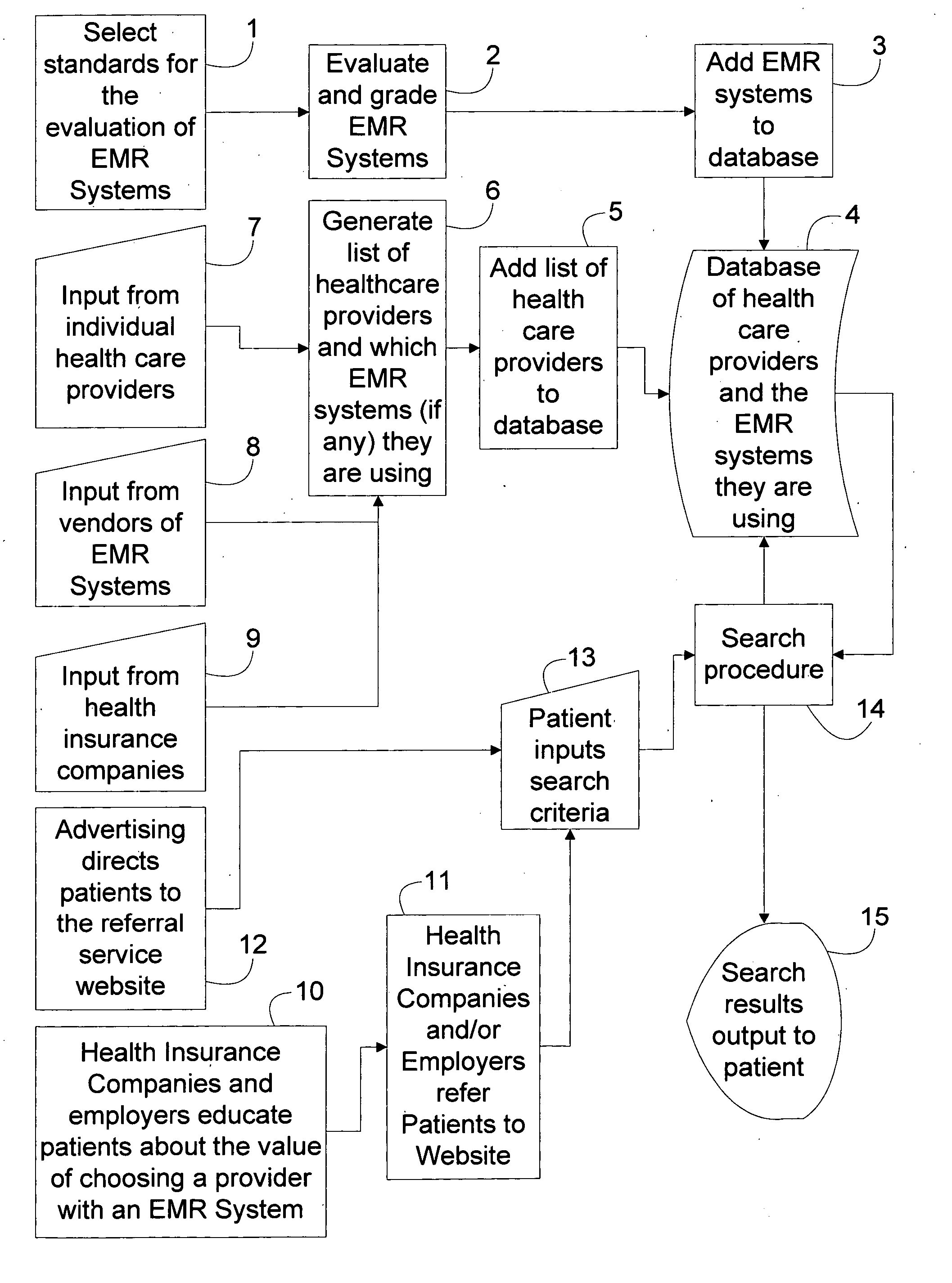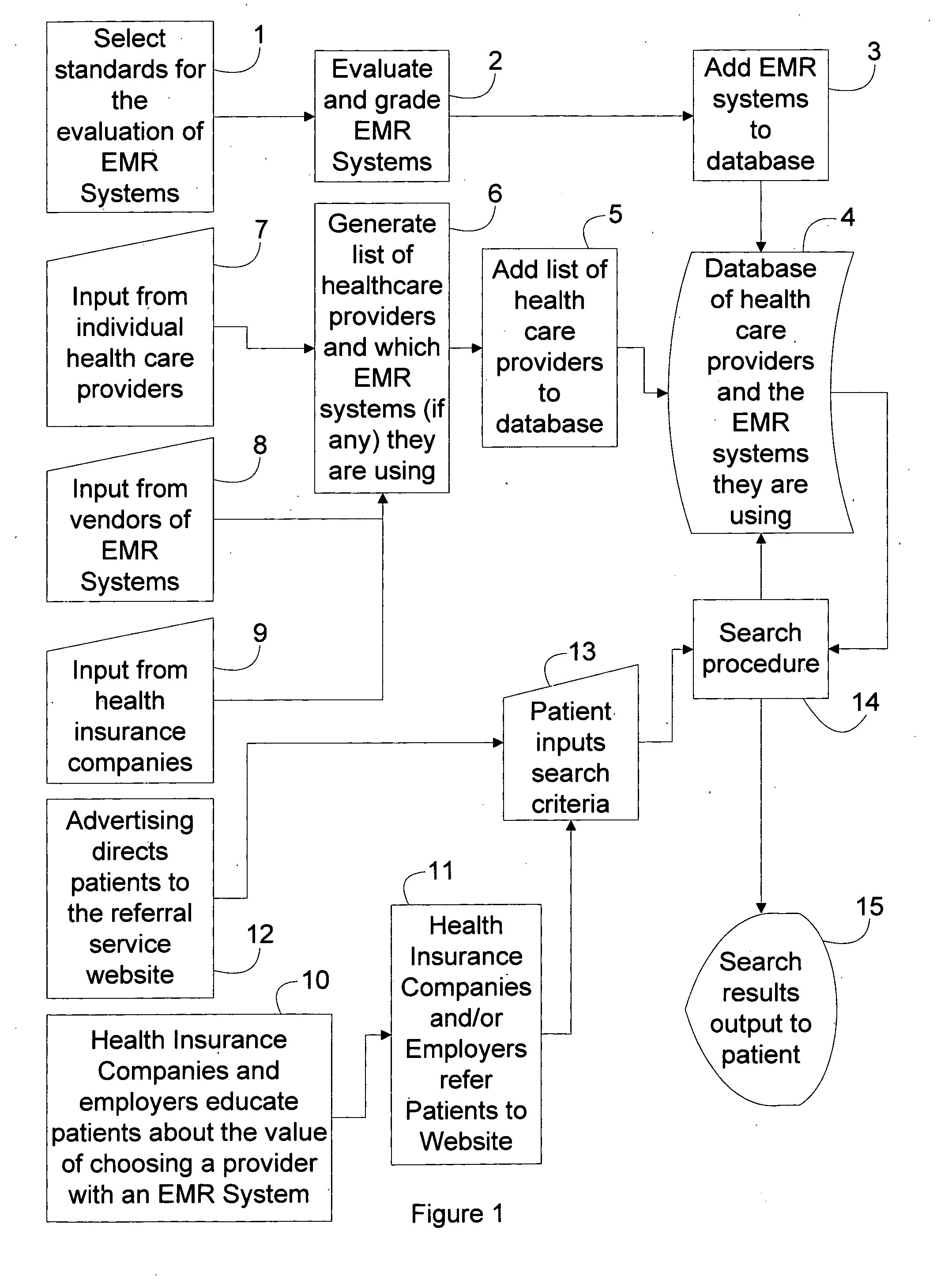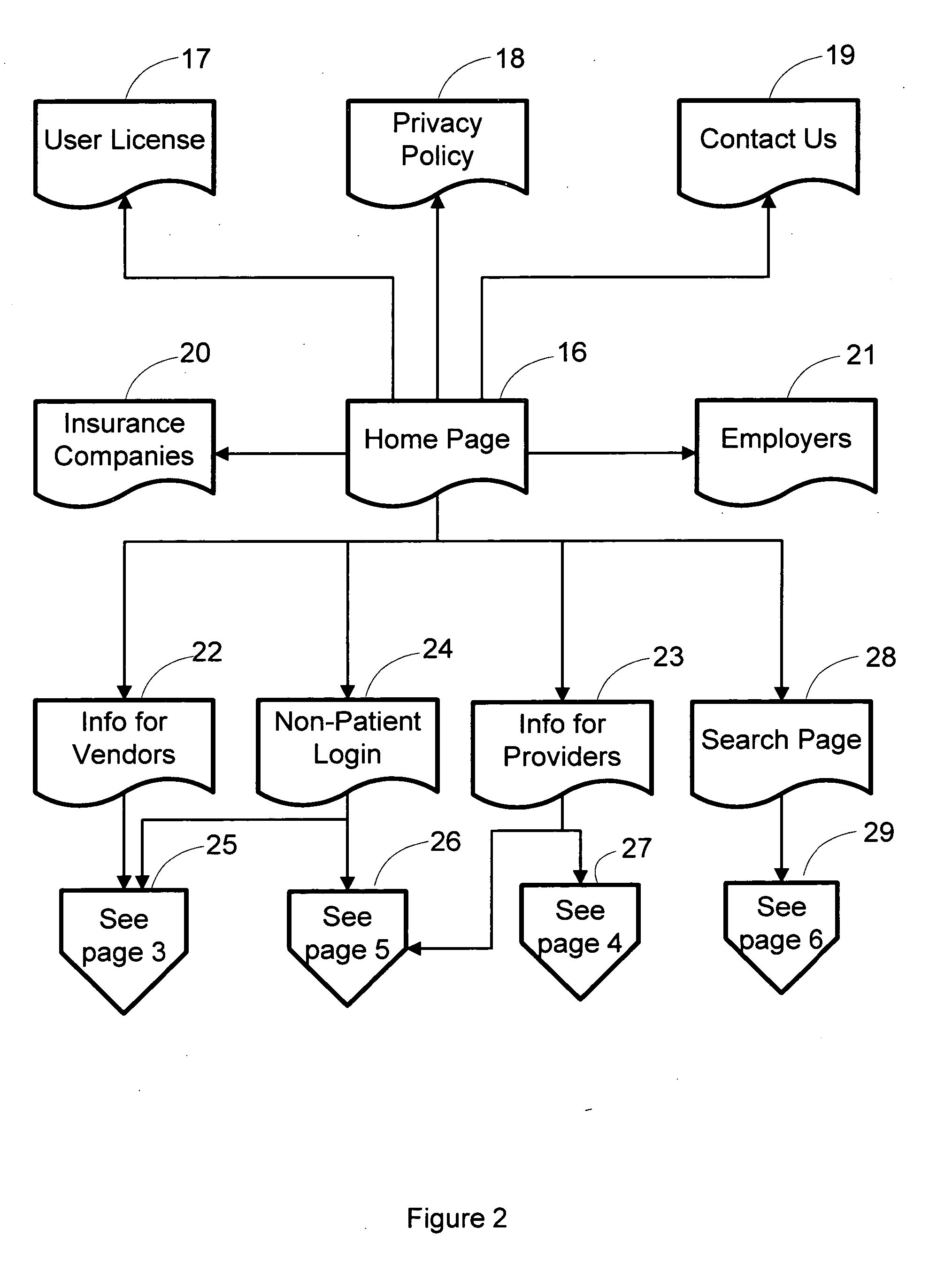The terminology used in the prior art is inconsistent.
They do not assist a patient to find a healthcare provider who offers the advantages of an EMR.
They do not assist a patient to find a healthcare provider who is using an EMR.
Again they do not assist a patient to find a healthcare provider who is using an EMR.
It also does not assist a patient to find a healthcare provider who is using an EMR.
Once again it addresses a different need based on
medical risk and does not assist a patient to find a healthcare provider who is using an EMR.
Second, this
system does not assist a patient to find a healthcare provider who is using an EMR.
They are aimed at healthcare professionals and health information executives as is made clear from the name of the first website “ADVANCE for
Health Information Executives” and the “About Us” from the second website which states: “Healthcare
Informatics is a monthly business
magazine that provides timely, high-quality intelligence about
information technology for the executives and managers on the IT decision-making team in healthcare facilities and organizations of every type.” Such websites are not aimed at patients and are not patient-friendly.
A patient could use them to learn about individual EMR systems but they do not assist patients to find healthcare providers who are using an EMR.
This proposal would give highly motivated consumers the opportunity to find healthcare providers with EMR's but the majority of consumers would be unlikely to take
advantage of such an opportunity because they would be unlikely to think about it at the time when they are searching for a healthcare provider.
This proposal also fails to take
advantage of the presentation of EMR assessment results to patients.
It claims to provide “Access to new, insured patients through links from health plan online provider directories (more than 55 million covered lives) directly to your Medem practice
Web site.” This service addresses a different problem because it does not assist patients to find providers who are using EMR systems.
There is no
search engine and they do not help a patient find a provider with EMR's in general nor do they objectively grade EMR's by the performance of the systems.
This implementation was been widely criticized because of its use of performance data that was outdated.
In many cases
small sample size made the data of dubious statistical validity.
Such providers are therefore also denied “
stars” making it more difficult for them to build their practices.
The first relates to making the method used to pay physicians or groups transparent to the public.” Recent pay-for-performance systems have failed to meet this design principle of transparency.
There is no evidence for the assumption that such systems assist a patient to find higher quality healthcare.
Therefore, while EMR use is part of the POL assessment
system, POL cannot be viewed as a
system for referring patients to providers who are using EMR's.
By failing to provide graduated assessment reports to patients the POL program gives these providers no recognition or incentive to obtain EMR systems.
The cost of health insurance is already a heavy burden for many small employers.
It is unlikely that the promise of long term savings will convince them to pay more to use the POL program.
The uninsured will be unable to benefit from the POL system and, as explained below they may actually be harmed by it.
This is an enormous expense for the insurance companies and employers.
There is little incentive for employers and health insurance companies to use the POL system when a competing service, using a different approach, can improve healthcare by accelerating the adoption of EMR's and do this more effectively and at little or no cost to employers and health insurance companies.
The above problems with the POL system relate directly to the claims in our
patent application.
Only a minority of healthcare providers meet all these requirements, therefore the benefits that POL can achieve in terms of improving healthcare are limited by this lack of universality.
These costs are insignificant compared to the hours of administrative time required to gather the data to complete the application.
“Bridges to Excellence” does not state an administrative time estimate for the POL program but for their similar Diabetes Care Link (DCL) program their estimate is: “applicants should anticipate that it will require 1-3 months to identify eligible patients, abstract data for these patients from medical records and / or administrative systems, enter data into the self-assessment worksheet and submit all completed materials and their application to NCQA.” The direct and indirect cost of obtaining POL recognition is so high that only physicians with a substantial number of eligible patients will find the program worth their trouble.
Providers who go through this process and are denied “recognition” lose all of their investment.
The POL program also fails to take
advantage of the opportunity to create competition among high performing healthcare providers who are already recognized by POL.
High performing providers therefore are not given any incentive to keep their EMR systems up to date with the most advanced tools.
This in turn results in the failure of POL to put pressure on the makers of EMR systems to produce better systems over time.
Benefits apply only to a select group of patients: Because POL reports certification instead of graduated reports it fails to provide the great majority of patients with a tool to help them choose from among the providers who are not POL recognized.
In most ways this is quite desirable but the way in which POL accomplishes its goal has the unexpected
disadvantage of achieving its benefits at the expense of causing harm to the uninsured and underinsured.
Those same healthcare providers have no expectation of obtaining POL “recognition” therefore POL gives them no incentive whatever to obtain EMR systems.
The underprivileged will be systematically forced to obtain their healthcare from the worst providers, a worse situation than these patients are in currently.
Worse still, the POL system provides no tool to help these patients choose the best provider who is realistically available to them nor does it provide any incentive for the worst healthcare providers to obtain EMR's.
The POL system will not help patients make these unselfish choices.
It does not provide “moment of decision
referral” of patients to providers who are using EMR's.
The lack of graded reporting to patients means that POL offers nothing to patients who can't see a POL recognized provider.
Although POL does have some effect of accelerating the adoption of EMR's by healthcare providers it is inefficient because provider use of an EMR represents a small fraction of the POL performance measure.
This is a cumbersome task which few patients would take the trouble to complete.
It is difficult to overstate the value of these systems to healthcare.
Many EMR systems are incompatible with one another.
In the near future this situation will compromise
patient care because of the inability of different healthcare providers to share the patient's
health data.
Also consider that some providers will be denied recognition by POL and will lose their fees.
(3) When important new ideas in EMR systems appear those same ideas that make them better are likely to make them less compatible or even incompatible with older systems.
Health insurance companies and employers potentially also experience the expense of whatever they choose to pay to healthcare providers as an incentive to use the system or as part of a pay-for-performance system.
Most patients are not aware of the benefits that result from choosing a healthcare provider who is using any EMR system much less an advanced, compatible system.
The prior art does not give patients any practical way to know which healthcare providers offer healthcare enhanced with this technology.
Administrative costs are already consuming much of the healthcare dollar.
 Login to View More
Login to View More  Login to View More
Login to View More 


